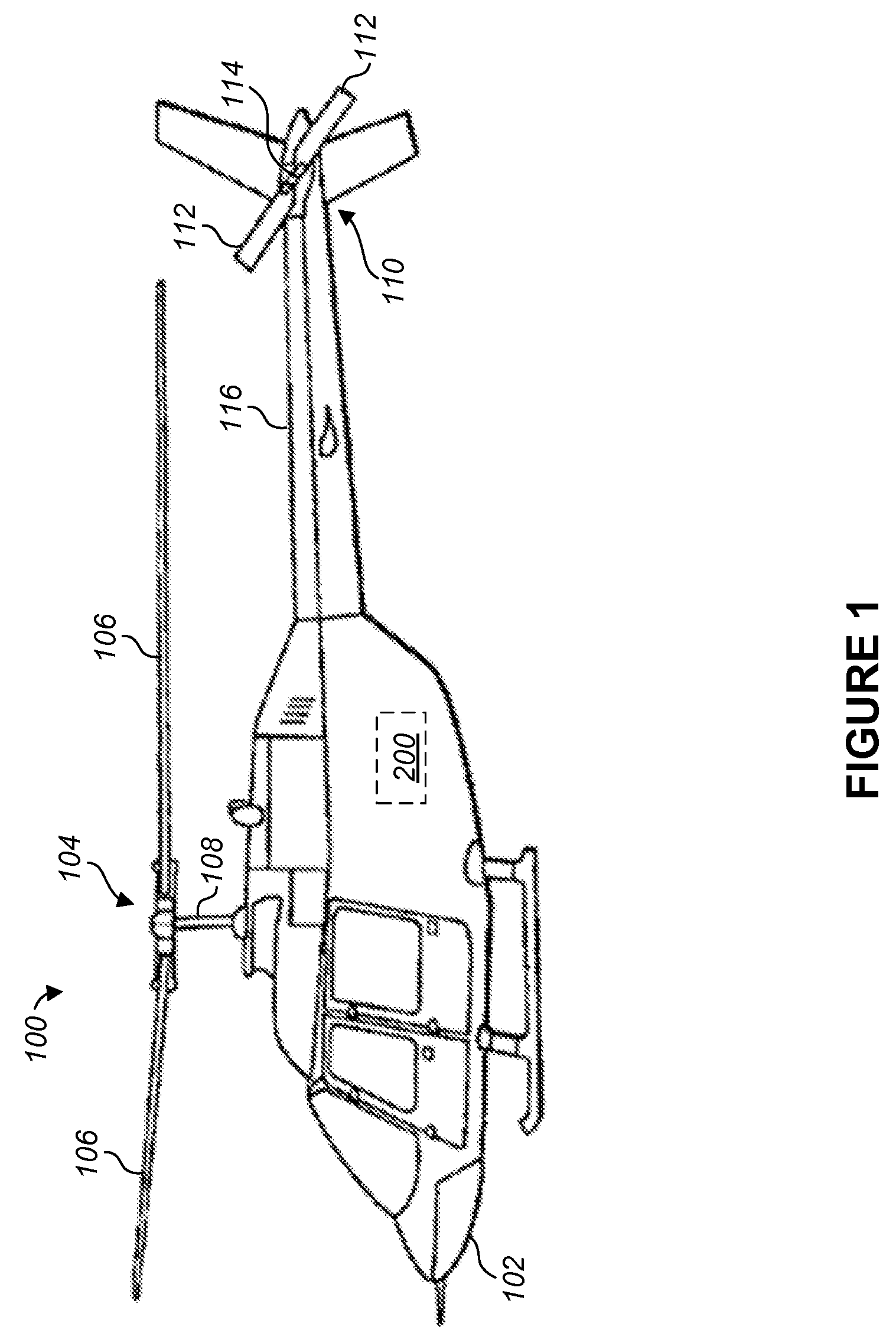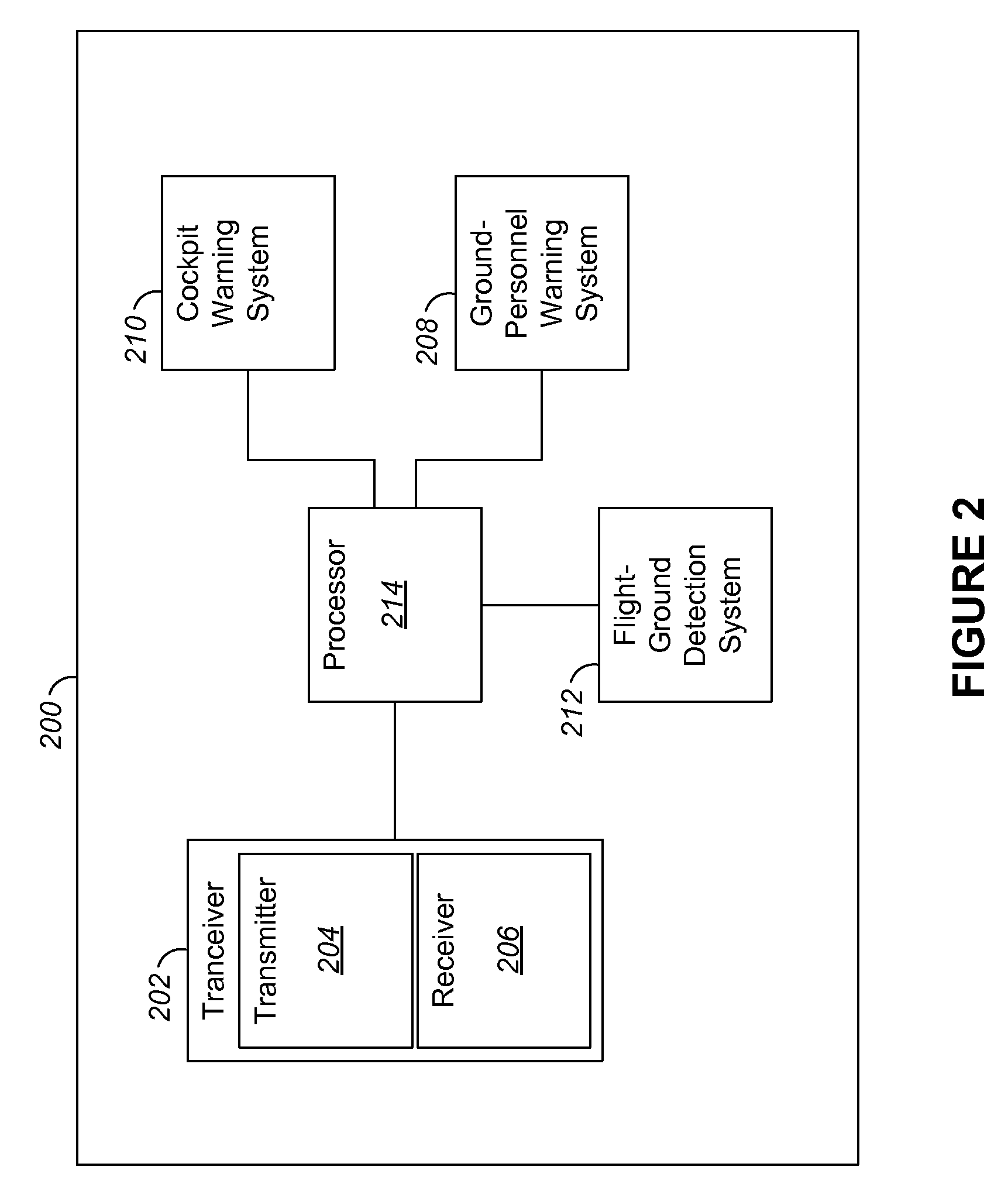Collision avoidance and warning system
a technology applied in the field of collision avoidance and warning system, can solve the problems of stinger providing minimal protection, presenting an extremely dangerous hazard to nearby personnel, and affecting the safety of personnel,
- Summary
- Abstract
- Description
- Claims
- Application Information
AI Technical Summary
Problems solved by technology
Method used
Image
Examples
Embodiment Construction
[0014]Referring to FIG. 1 in the drawings, a helicopter 100 having a collision avoidance and warning system, generally designated as system 200, according to the present disclosure is illustrated. It will be appreciated that system 200 can include multiple sub-elements that are dispersed within the helicopter 100 rather than all located in a single location. Helicopter 100 has a fuselage 102 and a main rotor assembly 104, including main rotor blades 106 and a main rotor shaft 108. Helicopter 100 has a tail rotor assembly 110, which serves as an example of an anti-torque system. The tail rotor assembly 110 includes tail rotor blades 112 and a tail rotor shaft 114. Main rotor blades 106 generally rotate about a longitudinal axis of main rotor shaft 108. Tail rotor blades 112 generally rotate about a longitudinal axis of tail rotor shaft 114. Main rotor blades 106 and tail rotor blades 112 are driven by a drive means (not shown) carried by fuselage 102. Torque is transmitted from the d...
PUM
 Login to View More
Login to View More Abstract
Description
Claims
Application Information
 Login to View More
Login to View More - R&D
- Intellectual Property
- Life Sciences
- Materials
- Tech Scout
- Unparalleled Data Quality
- Higher Quality Content
- 60% Fewer Hallucinations
Browse by: Latest US Patents, China's latest patents, Technical Efficacy Thesaurus, Application Domain, Technology Topic, Popular Technical Reports.
© 2025 PatSnap. All rights reserved.Legal|Privacy policy|Modern Slavery Act Transparency Statement|Sitemap|About US| Contact US: help@patsnap.com



